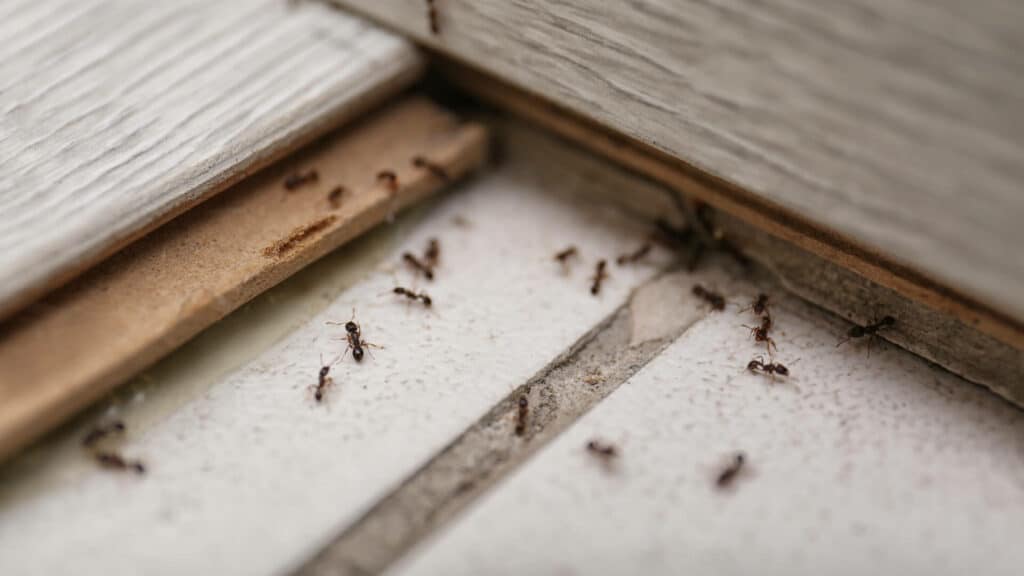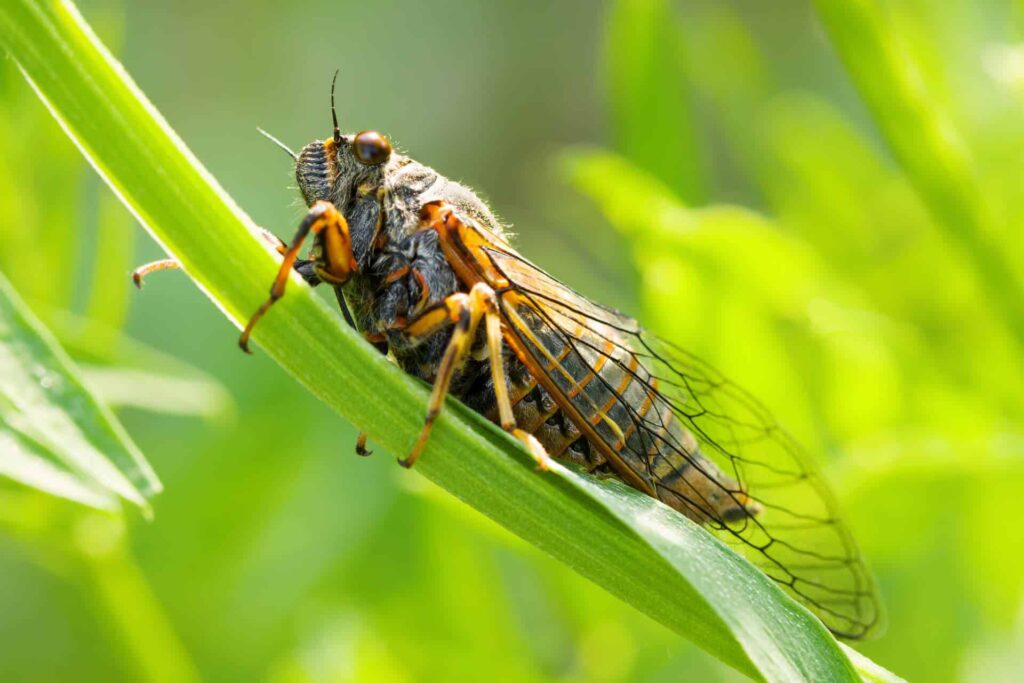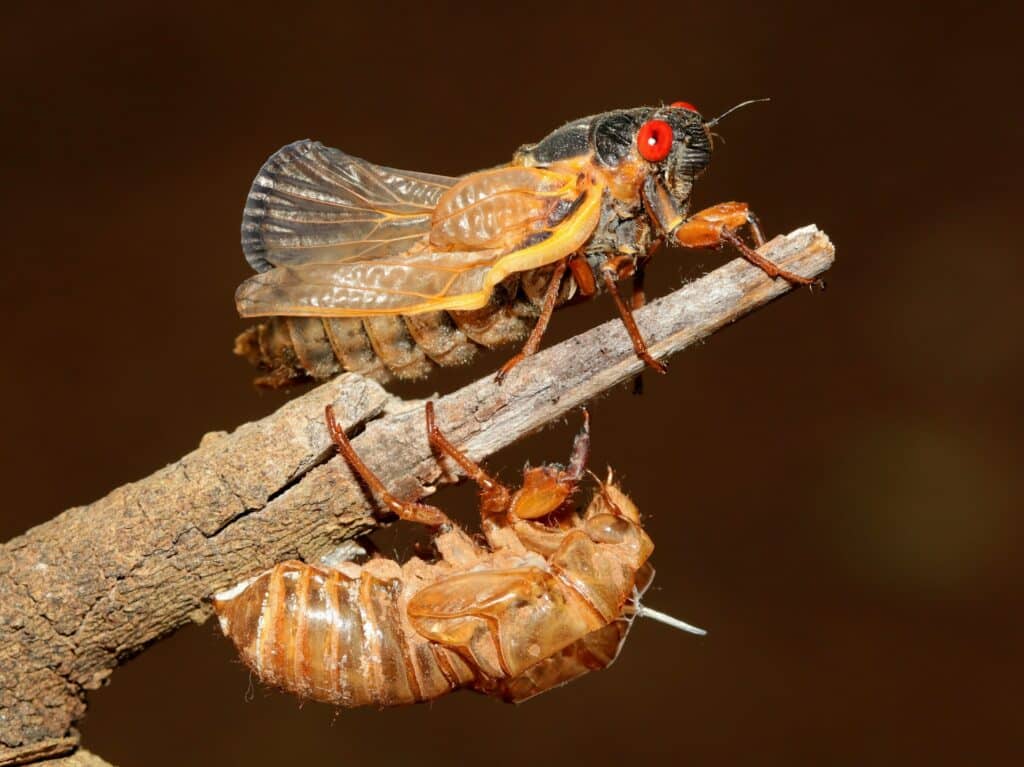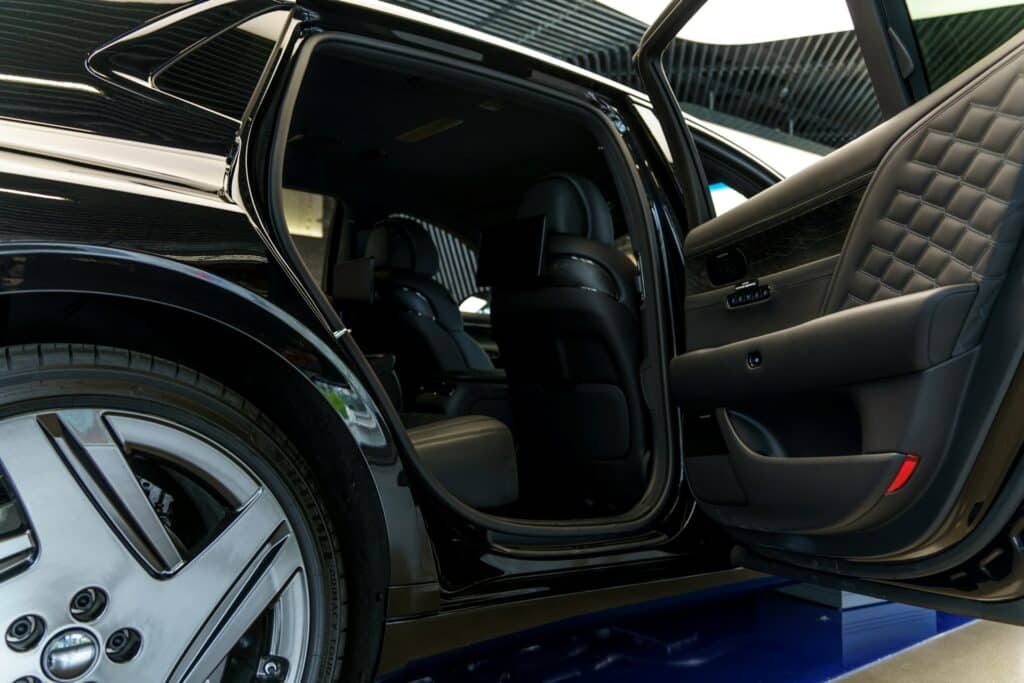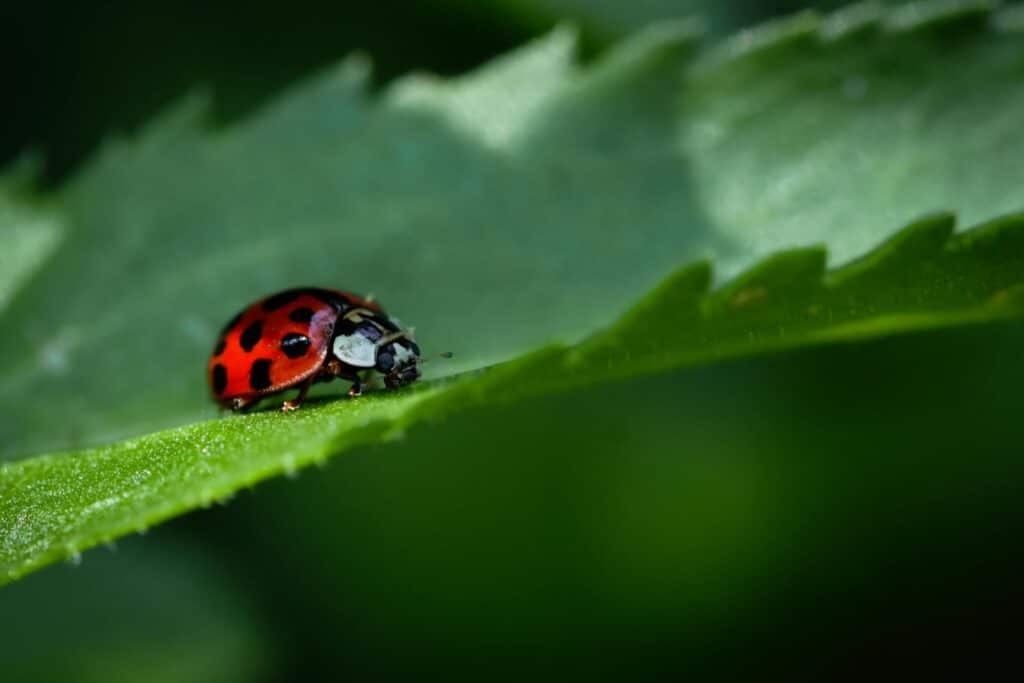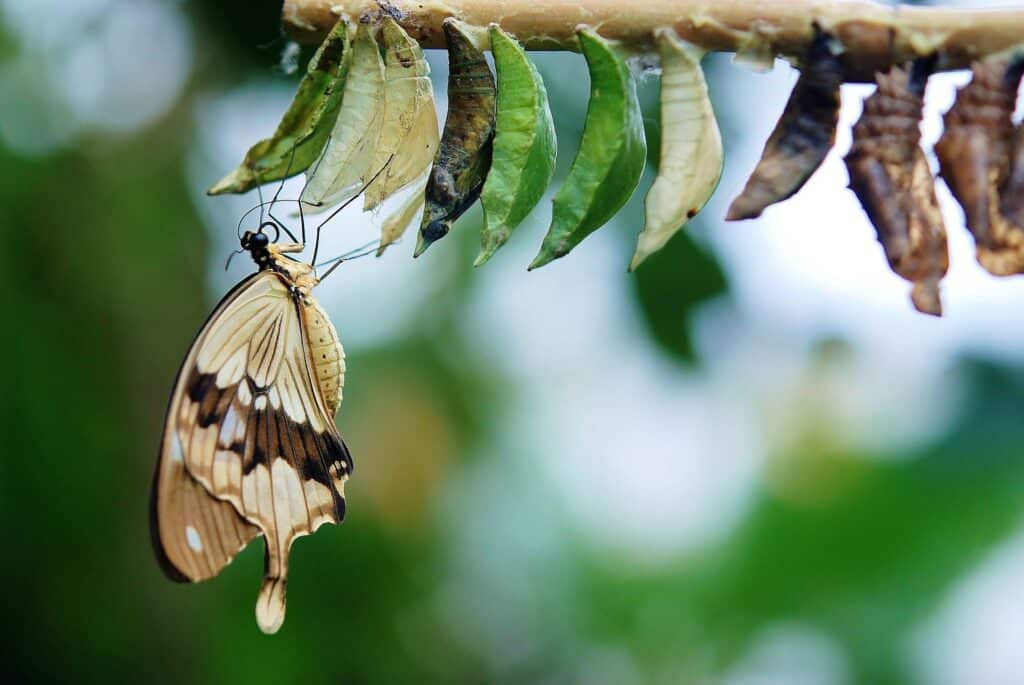Pharaoh ants might be tiny, but don’t let their size fool you—they’re invasive pests that can turn your home into their personal playground if given the chance. Once they’re in, they can be challenging to manage, thanks to their ability to multiply and spread at an alarming rate.
Pharaoh ants are a global problem, infesting homes, hospitals, and commercial buildings worldwide. And with the right knowledge and strategies, you can take steps to manage these persistent invaders in your homes. Whether you’re dealing with a minor annoyance or a full-blown infestation, knowing how Pharaoh ants operate is the first step to finding a solution for Pharaoh ant infestations.
What are Pharaoh Ants?
Pharaoh ants are a small but persistent pest, measuring just about 1/16th to 1/12 inch in length with segmented bodies. Their tiny size and light yellow to reddish-brown coloration make them easy to overlook, but they’re hard to ignore once they’ve settled in. These ants are notorious for thriving in warm, humid environments, so they often make themselves at home in places like kitchens and bathrooms. Additionally, Pharaoh ants are distinguished by their unique social structure and behavior, contributing to their widespread presence in various types of homes and buildings.
The Unique Characteristics and Behavior of Pharaoh Ants
Pharaoh ants have some unique characteristics and behaviors that set them apart from other ant species. Here are some of them below:
Reliance on Larvae
One interesting fact about these species, in particular, is their dependence on their larvae. In these ant colonies, the worker ants have a special role: they bring partially digested food back to the nest. This food is given to the larvae, which then consume it and help process it further. The larvae regurgitate this food, turning it into a form that the adult ants can eat.
Most adult Pharaoh ants can’t digest solid food on their own. Instead, they depend on this system, where the larvae help break down the food for them. This complex feeding relationship emphasizes their reliance on each other to sustain the colony.
This dependency makes controlling Pharaoh ant infestations particularly challenging since disrupting this food processing system without eliminating the larvae could only temporarily reduce ant activity without fully addressing the root of the infestation.
Ability to Form Multiple Queens
One of their most notable characteristics is their ability to form multiple ant queens within a single colony. The presence of multiple queens means that if one queen is removed or killed, other queens can continue to reproduce and maintain the colony’s growth.
High Reproductive Rate
Another important factor is their high reproductive rate. A single Pharaoh ant colony can grow to contain thousands of ants. They spread efficiently through a process called “budding.” This means that when part of the colony is disturbed, queens and workers may split off and create new nests elsewhere.
In some cases, these colonies can extend across large areas, with interconnected nests spanning multiple rooms or even multiple buildings, making complete eradication particularly difficult. This reproductive strategy enables Pharaoh ants to rapidly colonize new areas, which can lead to persistent infestations and make it challenging to fully manage their populations.
Elusive Nesting Habits
Pharaoh ants are also known for their small size and preference for hidden, warm, and humid environments. Their diminutive size allows them to enter homes through tiny cracks and crevices that might not be immediately visible. They often build nests in hard-to-reach areas such as behind walls, in insulation, or within furniture.
Moreover, their nests can be highly dispersed, with multiple small nests rather than one central location. Their ability to thrive in these hidden locations makes them particularly elusive and hard to control.
Are Pharaoh Ants Harmful?
Pharaoh ants might be small, but they can cause significant issues once they invade your home. While their bites result in only mild irritation and are generally not painful or harmful to humans, the real concern lies in their behavior and impact on your environment.
Pharaoh ants are well-known for their tendency to contaminate food. This is a major concern as it can lead to the spread of harmful bacteria, such as diseases like salmonella. If Pharaoh ants find their way into your kitchen, they can carry these bacteria across countertops, inside food containers, and onto other surfaces. This can turn your home into a potential health hazard, especially the risk of foodborne illnesses if proper hygiene and food practices are not maintained.
3 Ways on How to Identify Pharaoh Ants
Identifying Pharaoh ants can be tricky due to their tiny size and nondescript coloring, which often makes them difficult to spot against typical household backgrounds. Pharaoh ants also have two nodes or segments in their antennae, and their bodies are slightly translucent.
Additionally, Pharaoh ants prefer warm, hidden areas, which adds to the challenge of spotting them. They typically establish colonies inside walls, under floors, and in other secluded spaces that provide the warmth and humidity they need to thrive and multiply.
Despite their tendency to remain hidden, there are several signs you can look for to determine if Pharaoh ants have invaded your home:
- Ant Trails: Pharaoh ants are constant foragers and will leave trails as they search for food. If you observe ants traveling in lines or clusters, particularly near food sources such as kitchen counters, pantry shelves, or pet food bowls, this could be an indication of their presence.
- Debris Near Nests: Another sign of Pharaoh ant activity is the presence of debris around their nests. Common nesting sites include wall voids, electrical outlets, behind baseboards, cabinets, and other secluded areas near moisture and food. You might find small piles of discarded insect parts, dead ants, or other remnants near the locations where they have established their colonies. This debris often accumulates near entry points or along their travel routes.
- Unusual Odors: In some cases, a slight, musty odor might be noticeable in areas heavily infested with Pharaoh ants. While this can sometimes accompany their presence, it is not always a reliable indicator.
If you spot any of these indicators, it’s a strong sign that Pharaoh ants have taken up your residence. So, detecting them early and performing interventions is highly crucial as Pharaoh ants can quickly establish and expand their colonies.
7 Steps on Preventing and Treating Pharaoh Ant Infestations
Getting rid of Pharaoh ants requires a multifaceted approach due to their complex colony structure and rapid reproduction. Here’s how to effectively eliminate them:
- Step 1: Identify the Infestation: Begin by locating the nests, which are often hidden in warm, moist areas—inside walls, under floors, and behind appliances. Look for trails of ants, debris near their nests, and small piles of discarded insect parts.
- Step 2: Seal Entry Points: Close off all potential entry points to prevent more ants from entering your home. Seal cracks and crevices around windows, doors, and utility lines. Ensure that screens and weather stripping are intact.
- Step 3: Address Moisture Issues: Pharaoh ants are attracted to damp environments, so fix any leaks in pipes and reduce humidity in your home. Use dehumidifiers in problem areas like basements and bathrooms.
- Step 4: Employ Natural Remedies: For minor issues, sprinkle diatomaceous earth around entry points and along ant trails. Peppermint, citrus, or tea tree oil, mixed with water and sprayed in affected areas, may also deter ants.
- Step 5: Use Baits and Insecticides: For severe Pharaoh ant infestations, place ant baits near trails and suspected nests. The baits attract ants, which carry the poison back to the colony. When using baits, patience is key, as it may take several days or even weeks for the poison to work its way through the entire colony. Meanwhile, insecticidal sprays can be used around entry points and nest locations for immediate control. As always, care should be taken to follow manufacturer’s directions and use around pets and children.
- Step 6: Maintain Cleanliness: Keep food stored in airtight containers, promptly clean up spills, and take out the trash regularly. Eliminating food and water sources helps to make your home less attractive to Pharaoh ants and supports ongoing prevention efforts.
- Step 7: Monitor and Reassess: Continuously monitor for signs of ant activity and reassess your treatment methods if necessary. Regularly check areas where ants were previously spotted to ensure the infestation is effectively managed.
However, preventing and treating Pharaoh ants can be overwhelming, especially when you’re facing a stubborn or large-scale infestation. Sometimes, despite your best efforts, a Pharaoh ant infestation can still become too much to handle alone. This doesn’t mean you’ve done anything wrong—pest issues can arise even in well-maintained homes.
When you find yourself in this situation, it is best to contact a team of professional pest control experts for tailored solutions and expert advice for ant control.
Get Rid of Pharaoh Ants Today with Aptive’s Pest Control!
If you are struggling with Pharaoh ants invading your home, Aptive’s expert pest control services are here to help! Our approach focuses on identifying the full extent of the infestation and applying targeted, tailored treatments that address not just the visible ants but also the hidden colonies.
This thorough approach aims to manage the problem at its source and reduce the chances of re-infestation. Also, our experts provide long-term prevention strategies by assessing your home’s vulnerabilities and offering effective pest solutions to help protect you and your home against future invasions. Contact us today for a free quote and take the first step towards a more comfortable home. We’re committed to helping your home thrive, one step at a time!
